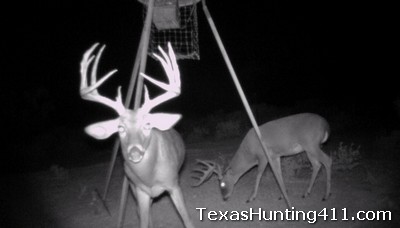The weather in Texas can be hit or miss on any given year, but it seems this year has really been a strike-out in the rainfall category, especially in South Texas. But then again, that region of the state is rarely known for abundant precipitation. It is, however, known for fantastic white-tailed deer hunting. While the area boast extremely high coyote populations, the heavy brush habitat provides excellent whitetail cover and high quality deer foods in the form or browse.
Many of the counties in South Texas can only expect 21-25 inches of rainfall on an average year, so the habitat and the deer in the area will survive this drought, but that still does not make it great for deer hunting this fall. The best way to mitigate for inevitable dry conditions any South Texas property will face is to focus on the wildlife management goals and practices for your property on an annual basis.

First, always think habitat. Good habitat is the corner stone of healthy deer, turkey, and quail populations. Always maintain a minimum amount of ground cover. If possible, one to two feet of herbaceous cover through all seasons is desirable. This residual grass is for fawning cover and quail production. Leaving herbaceous cover for the next rainfall event provides healthy plants that offer the necessary food and cover for many wildlife species. A landowner can not expect to have good quail and whitetail deer hunting if there is no food, recruitment or cover.
The ability to leave standing cover for habitat means having a plan to reduce livestock numbers in the pasture and/or move livestock to irrigated crop land or improved pastures. During extended droughts, you may be faced with removing livestock all together. Along with cattle, keeping whitetail deer and hog populations within the habitat’s carrying capacity will help reduce the potential for damage. By reducing the number of consumers on the land, you can maintain the minimum desired grass cover.
Since surface water is important for most wildlife species, maintain as many effective wildlife and livestock water locations as possible, especially in the hot, dry months. A desirable density would be one wildlife watering location every 400 acres. Although this may not be always be possible, the even distribution of water will spread wildlife evenly across the landscape, allowing for better use of the available habitat.
A popular option many ranches use to maintain a consistent deer population from year to to year is through the use supplemental feed. Though good vegetation through habitat management is best, extreme weather years such as this one mean that supplement feeding will be really important for buck antler growth and fawn production and recruitment. Keep in mind, however, that the ability to feed wildlife (and livestock) may reduce the impacts on habitat, but prolonged supplementing will cost both you and the habitat found on your property.
As far as deer hunting in South Texas this fall, I think we have all seen better years. That being said, there will be some good bucks out there as usual, especially on properties that limit buck harvest, have a good cull buck strategy and maintain a healthy buck age structure. Ranches with good habitat and decent surface water that are feeding protein pellets to deer should barely skip a beat. It’s been a horrible year for quail, but the dove hunting should be good around tanks come September. Send me your reports and or photos!